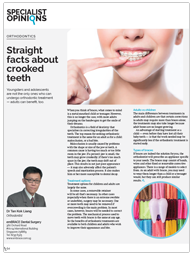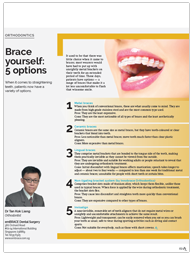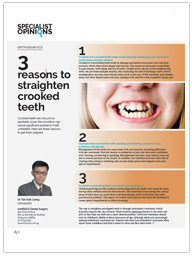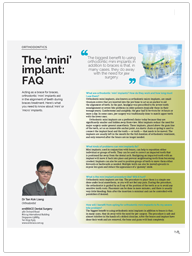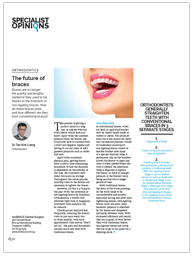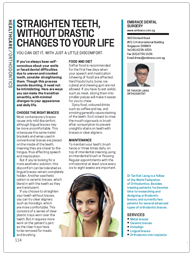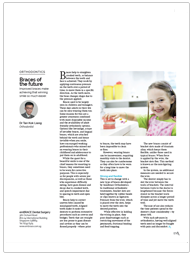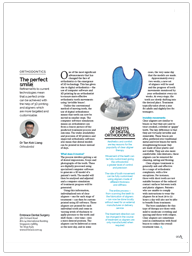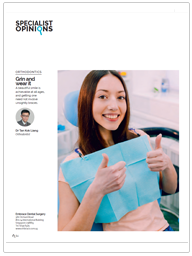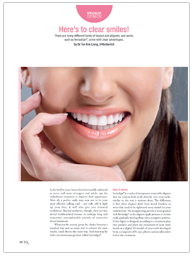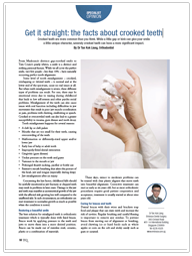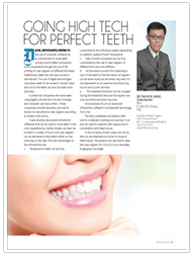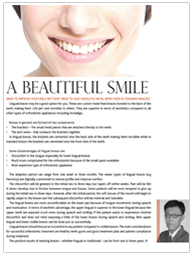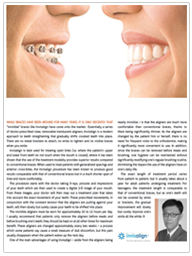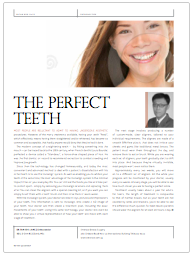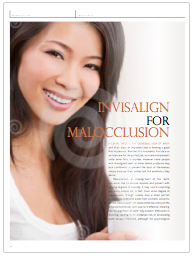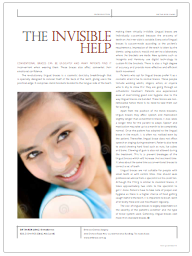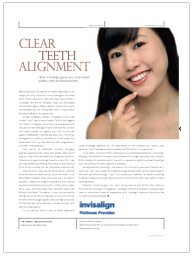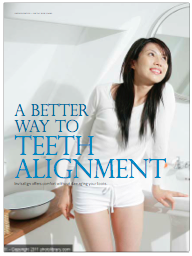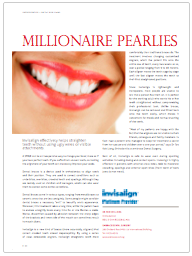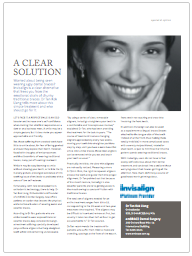IMPROVED BRACES MAKE ACHIEVING THAT WINNING SMILE SO MUCH EASIER.
Braces help to straighten crooked teeth, so balance between the teeth and face is achieved. They work by applying continuous pressure on the teeth over a period of time, to move them in a specific direction. As the teeth move, the bone changes shape due to the pressure applied.
Braces used to be largely seen in children and teenagers. These days adults in their 40s can be seen wearing them too. Some reasons for this are a greater awareness combined with more disposable income and the availability of adultfriendly orthodontic options. Options like Invisalign, a type of invisible braces, and lingual braces, which are attached behind the teeth and hence invisible when you smile, have encouraged working professionals who missed out on wearing braces in their childhood and adolescence to put them on in adulthood.
While the quest for a beautiful smile is one of the chief reasons for resorting to braces, they sometimes need to be worn for corrective purposes. This is especially so for people with severe jaw discrepancies, as well as those who experience difficulty eating, have gum disease and decay due to crooked teeth, and speech impairment due to spacing in teeth and open bite.
Braces help to correct uneven bites caused by misaligned teeth. Aligned teeth make it easier for dentists to perform restorative procedures such as crowns and bridges. Teeth that are straight are less prone to gum disease and cavities as they can be flossed properly - where prior to braces, the teeth may have been impossible to clean or floss.
However, wearing braces can be inconvenient, requiring monthly visits to the dentist. They can also be cumbersome as they often have to be worn for a long time to move the teeth into place.
Strong and flexible
This is set to change with a new type of braces developed by Innobrace Orthodontics. In traditional orthodontic treatments, bracket slots are held together by rubber bands or clips known as ligatures. Pressure from the wire, which is placed over the slots, helps to move the teeth into the desired position.
While effective in holding the wiring in place, they pose disadvantages such as restricting movement of the jaw/mouth, frictional binding and food trapping.
The new braces consist of bracket slots made of titanium alloy, which keeps them flexible, unlike those used in typical braces. When force is applied by the wire, the bracket slots flex. This method is known as the non-ligating system.
In the system, no additional measures are needed to secure the wire.
The dentist simply has to slot the wire between the walls of brackets. The interval between visits to the doctor is lengthened because the forces stored in the bracket walls dissipate across a longer period of time and yet move the teeth well.
The ease of use also reduces the time patients spend in the dentist’s chair considerably - by about 50%.
With such advances in orthodontics, having well-aligned teeth need no longer be fraught with pain and discomfort.

